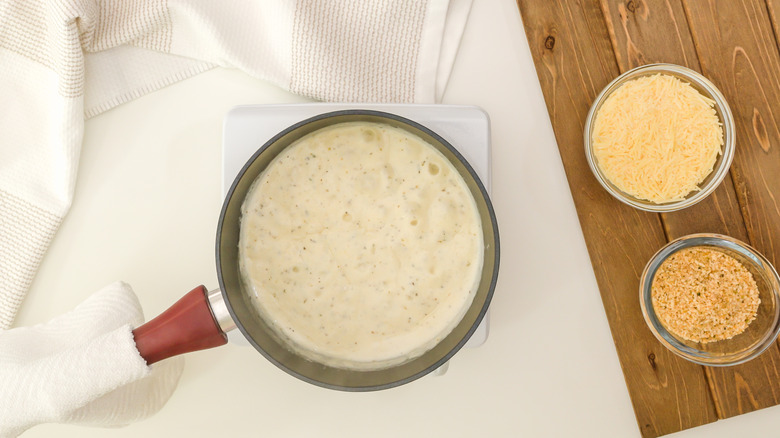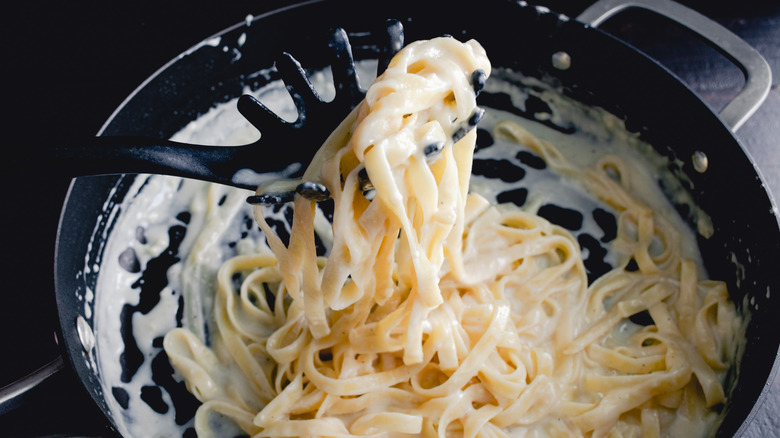The Trick To Reheating Cream-Based Pasta Sauce
We've all been there: you made a tasty alfredo or creamy vodka sauce, but you just can't finish it up in one night. No problem! It'll make great leftovers tomorrow, right?
Not so fast. While many stews, soups, and sauces taste just as good (or better!) the next day, cream-based sauces are a little trickier. If you reheat a cream-based sauce, it'll likely turn into a lumpy, oily mess unless you take the time to reheat it correctly. If you want to understand how to reheat cream-based sauces, it's helpful to know why they separate in the first place.
According to The Guardian, milk has a complex chemical makeup involving tiny fat droplets encased in a delicate membrane and suspended in water. When milk experiences sudden temperature change, the membranes break, and the fat and water separate, giving it a lumpy texture. Livestrong explains that older dairy products tend to separate easily, so try to use the freshest ingredients for the best taste and texture.
Fortunately, there are a few tricks you can use to make sure your sauces don't separate. Never reheat a cream-based sauce more than once, though. According to Leaf, this increases the chances of bacterial growth.
Add more cream to keep the sauce from separating
The best way to reheat cream-based sauces is to work slowly and add additional cream as you go (via Leaf). Bring the sauce to room temperature first, then pour it into a pan and gradually raise the stove's temperature while adding cream bit by bit. The fat in the cream helps prevent the sauce from separating. If it does separate, take it off the stove and add a teaspoon of cold water. Be sure to stir with force, and the sauce should start to come back together.
According to Pantry and Larder, a double boiler is one of the best methods since the second-hand heat prevents the sauce from getting too hot too quickly. A regular saucepan puts the pasta sauce in direct contact with the heat source, and you could get inconsistent results based on the type of pan you're using. A double boiler will provide consistent results and give you greater control over the process. Reheating cream-based sauces on the stovetop will get better results than using a microwave, but you can still use it in a pinch. Use a low setting and microwave the sauce in increments of 20 seconds, checking and stirring as you go.
With a bit of patience, you can extend your sauces an extra night — but white sauce is meant to be eaten fresh, so make small batches and try to avoid having leftovers at all. If not, one of these methods is sure to save it.

